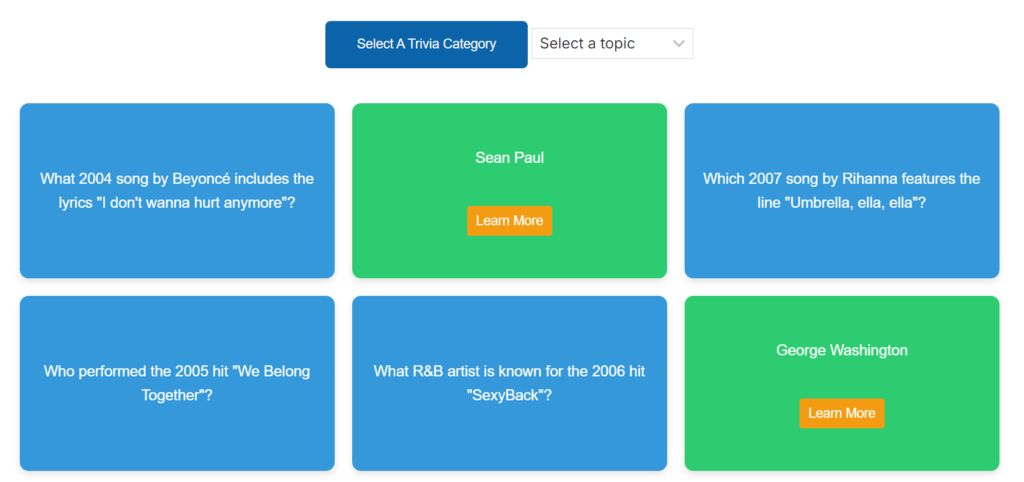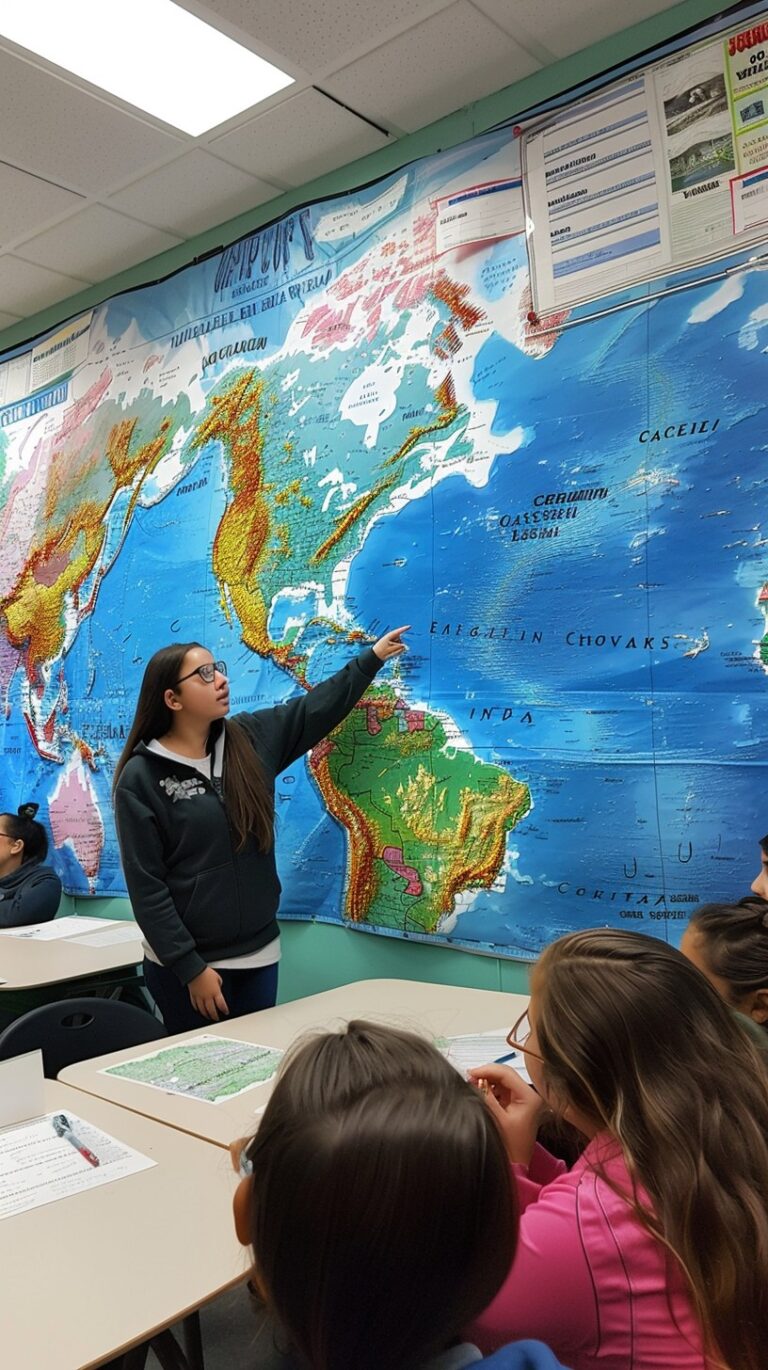Custom trivia game design is more than just a creative endeavor—it’s a journey filled with twists, turns, and unexpected revelations.
Embarking on this path involves transforming a mere idea into a fully interactive experience that engages and entertains.
Interested in fun facts, check out our curated list for more fun facts about animals. or select your category here
Introduction
Creating a trivia game might seem straightforward, but let me tell you, the journey from concept to execution is filled with unique challenges and learning experiences.
This isn’t just a guide—this is my personal account of developing a custom trivia game, complete with lessons learned, obstacles faced, and unexpected twists along the way.
So, grab a snack, get comfy, and let’s dive into the exciting world of trivia game creation!

The Spark of Inspiration
It all started with a simple idea: I wanted to create a trivia game that would bring people together. You know those nights spent with friends, laughing and debating the answers to trivia questions? I wanted to recreate that magic.
But I didn’t want to just make another generic trivia game. I wanted something unique. Most trivia games focus on broad categories like pop culture or general knowledge, but I wanted to dig deeper.
I wanted a theme that would challenge players and make them think, while also being fun and engaging.
Choosing the Right Theme



Picking the right theme is crucial. It’s like choosing the perfect playlist for a road trip—it sets the mood for the entire journey.
After brainstorming for a while, I settled on a theme that combined my love for history with my fascination for the unexplained: “Unsolved Mysteries of the Ancient World.”This theme was perfect!
It was intriguing, and there was a wealth of material to work with. Plus, who doesn’t love a good mystery?
Brainstorming Ideas
When I brainstormed, I let my imagination run wild. I wrote down every idea that came to mind, no matter how crazy it seemed.
I wanted to capture the essence of ancient civilizations and their mysteries. Here’s a tip: Don’t censor yourself during brainstorming. Just jot down everything!
You never know when a seemingly silly idea might turn into a gem.
Researching the Topic
With the theme locked in, it was time to dive into research. This part was a blast! I spent hours reading books, watching documentaries, and browsing online resources about ancient civilizations and their unsolved mysteries.
I discovered incredible tales about the pyramids of Egypt, the lost city of Atlantis, and the Nazca Lines in Peru. Each story was rich with detail and intrigue. I knew I had struck gold!
The Importance of Thorough Research
Research is key. It ensures your questions are accurate and engaging. Plus, it helps you uncover fascinating stories and little-known facts that can add depth to your game.
When I researched the Great Pyramid of Giza, I learned about the various theories surrounding its construction. I thought, “This could make a great trivia question!” Pro tip: Always fact-check your information.
You want your game to be credible and trustworthy.
Exploring Different Perspectives
As I dove deeper into my research, I realized that many ancient mysteries have multiple interpretations. For example, the Nazca Lines have various theories about their purpose.
By presenting different perspectives in your trivia questions, you’ll encourage players to think critically and engage in lively discussions.
Crafting the Questions
Now came the real challenge: crafting the questions. This is where my trivia expertise came in handy, but it was also where I learned some valuable lessons.
Writing good trivia questions is an art form. It’s about striking the right balance between challenge and accessibility.
I started by drafting a list of potential questions, aiming for a mix of easy, medium, and hard ones.
The Art of Writing Engaging Trivia Questions
Here are some tips I picked up while crafting my questions:
- Mix it up: Include a variety of question types—some that test specific knowledge and others that encourage critical thinking.
- Avoid trick questions: You want to test knowledge, not catch players off guard with misleading wording.
- Keep it clear: Use straightforward language. Avoid jargon or overly complex phrasing.
- Add interesting facts: Weave in fascinating details to make your questions more memorable.
- Seek feedback: Share your questions with friends and be open to constructive criticism.
Playtesting the Questions
To refine my questions, I organized a small focus group of friends who shared my passion for trivia. We gathered over pizza and drinks, and I presented my draft questions.
The feedback was invaluable! I learned that some questions were too easy, while others were too obscure.
This process helped me fine-tune my questions and ensured they were engaging and thought-provoking.
Designing the Game
With the questions in place, it was time to bring the game to life visually.
I knew that the design would play a crucial role in setting the mood and creating an immersive experience.
I collaborated with a talented graphic designer who shared my vision.
We brainstormed ideas for the game board layout, card designs, and packaging. I wanted the artwork to reflect the theme, incorporating elements from various ancient cultures.
The Power of Visual Storytelling
Visual design is everything! It can transport players to a different time and place. Here’s what I focused on:
- Thematic elements: Use imagery and colors that reflect your topic. For my game, I chose deep blues and rich golds to evoke a sense of mystery.
- Clarity and readability: Ensure that everything is easy to read and navigate. Cluttered designs can confuse players.
- Engage multiple senses: Consider using high-quality materials or unique game pieces to enhance the experience.
- Tell a story: Use your design to guide players through the game and create a narrative arc.
When the first prototypes arrived, I was filled with excitement. It was like watching a dream come to life! I gathered my friends for a reveal party, and their reactions were priceless.
Testing and Refining
No game is complete without thorough testing. I gathered a diverse group of friends and family members, each with their own knowledge base and playing style, and put the game through its paces.During the testing sessions, I took notes on everything—how long each round took, how players interacted, and any confusion that arose.
The Importance of Playtesting
Playtesting is essential! Here’s what I learned:
- Observe player reactions: Pay attention to which questions generate excitement and which ones fall flat.
- Be open to feedback: If players find a question too difficult or confusing, be willing to make adjustments.
- Encourage discussion: Trivia should spark conversation. If a question leads to a lively debate, that’s a win!
One memorable moment during testing involved a question about the lost city of Atlantis. The players were divided on their answers, leading to a lively debate that lasted well beyond the game itself. I knew I had to keep that question in the final game!
Balancing Fun and Challenge
As I continued to refine the game, I focused on balancing fun and challenge.
I wanted players to feel a sense of accomplishment when they answered correctly, but I also wanted them to enjoy the learning process.
To achieve this, I incorporated different types of questions—some that required specific knowledge and others that encouraged players to think critically.
I also added a few “wild card” questions that allowed players to earn bonus points for particularly creative answers.
Creating a Balanced Trivia Game
Here are some tips for balancing fun and challenge:
- Vary the difficulty level: Include a mix of easy, medium, and hard questions to keep players engaged.
- Encourage collaboration: Design your game to foster teamwork, allowing players to pool their knowledge.
- Add surprises: Incorporate unexpected twists or bonus rounds to keep players on their toes.
- Tailor your game: Consider the age and interests of your players when crafting your questions.
By striking the right balance, you’ll create a trivia game that is both engaging and rewarding.
Creating the Game Rules
With the questions and design in place, it was time to establish the game rules.
I wanted a set of rules that were easy to understand yet provided enough structure to keep the game flowing smoothly.
For instance, I included a “Mystery Round” where players could earn extra points by answering particularly challenging questions. This added a layer of strategy to the game.
The Importance of Clear and Concise Rules
Clear rules are essential for ensuring a smooth gameplay experience. Here’s what I focused on:
- Keep it simple: Avoid overly complex rules that can confuse players.
- Be specific: Clearly define key terms and gameplay mechanics.
- Anticipate issues: Outline procedures for handling disputes and tie-breakers.
- Provide examples: Use clear examples to illustrate how rules work in practice.
- Organize logically: Group related rules together and use headings and bullet points for easy navigation.
By investing time in crafting clear and concise rules, you’ll create a better overall experience for your players.
Preparing for Launch
With everything in place, it was time to prepare for the launch of my trivia game.
I felt a mix of excitement and nervousness as I anticipated sharing my creation with a wider audience.
I decided to launch a crowdfunding campaign to help cover production costs and gauge interest in the game.
I spent weeks crafting a compelling campaign page, complete with engaging visuals and a detailed description of the game.
The Importance of Marketing
Marketing is key! Here’s what I learned:
- Tell your story: Share your journey and the inspiration behind your game. People love a good story!
- Use visuals: Engaging visuals can capture attention and showcase your game’s unique features.
- Engage your network: Reach out to friends, family, and social media followers to spread the word.
- Offer incentives: Create enticing rewards for backers to encourage support.
To my delight, the response was overwhelmingly positive! People were excited about the concept, and I quickly reached my funding goal.
It was an exhilarating experience, and it reinforced my belief that there was a market for my trivia game.
The Launch Party
After months of hard work, the day finally arrived for the official launch of my trivia game.
I organized a launch party to celebrate the occasion and invite friends, family, and supporters to play the game for the first time.
I transformed my living room into a trivia-themed wonderland, complete with decorations that echoed the ancient civilizations featured in the game.
Celebrating Your Achievements
As the guests arrived, I felt a rush of excitement. I could hardly wait to see their reactions as they played. I kicked off the evening with a brief introduction, sharing the inspiration behind the game and thanking everyone for their support.
Then, we dove into the first round of trivia.
Watching my friends engage with the game was one of the most rewarding experiences of my life. Laughter filled the room as they debated answers, shared stories, and enjoyed the thrill of competition.
It was everything I had hoped for and more.
Lessons Learned
As I reflect on my journey of creating a custom trivia game, I’m filled with a sense of pride and accomplishment. It was a challenging and rewarding experience that taught me valuable lessons about creativity, collaboration, and perseverance.
Here are a few key takeaways:
- Embrace research: The more you know about your topic, the better your content will be. Dive deep into research, and don’t be afraid to explore different perspectives.
- Seek feedback: Don’t hesitate to share your ideas with others. Constructive criticism can help you refine your work and make it even better.
- Balance fun and challenge: Ensure your game is accessible to a wide audience while still offering enough challenge to keep players engaged.
- Visual appeal matters: The design of your game can significantly impact the player experience. Invest time in creating an attractive and cohesive visual identity.
- Be prepared for adjustments: Flexibility is key. Be open to making changes based on feedback and testing. The final product may look different from your initial vision, and that’s okay!
- Celebrate your successes: Take time to celebrate your achievements, no matter how small. Launching a project is a significant milestone, and it’s important to acknowledge your hard work.
Conclusion
Creating a custom trivia game was a journey filled with challenges, learning experiences, and unforgettable moments.
It reminded me of the joy that a well-crafted trivia game can bring—not just in terms of knowledge but also in fostering connections and igniting curiosity in others.
So, if you’re considering creating your own custom trivia game, take heart!
It’s a journey filled with challenges and rewards, but one that’s well worth taking. Embrace the process, learn from your experiences, and most importantly, have fun along the way.
And who knows—maybe your game will be the one that brings people together and creates unforgettable memories for years to come.
References
- Wikipedia – Trivia:
Wikipedia. (n.d.). Trivia. Retrieved from https://en.wikipedia.org/wiki/Trivia
A comprehensive overview of trivia, its history, and various types. - How to Write Trivia Questions:
Trivia Plaza. (n.d.). How to Write Trivia Questions. Retrieved from https://www.triviaplaza.com/how-to-write-trivia-questions
Guidelines and tips for crafting engaging trivia questions. - The Psychology of Trivia:
Psychology Today. (2018). The Psychology of Trivia: Why We Love It. Retrieved from https://www.psychologytoday.com/us/blog/the-psychology-trivia
An exploration of the psychological appeal of trivia games and quizzes. - Trivia Game Design:
Gamasutra. (2020). Designing a Trivia Game: Tips for Success. Retrieved from https://www.gamasutra.com/blogs/YourName/20200301/123456/designing_a_trivia_game_tips_for_success.php
Insights into the key elements of designing a successful trivia game. - The History of Trivia:
Mental Floss. (2019). The History of Trivia: How It Became a Popular Game. Retrieved from https://www.mentalfloss.com/article/585071/history-of-trivia
A look at the origins and evolution of trivia as a popular pastime. - Creating a Trivia Night:
Quiz Night. (2021). How to Host a Trivia Night: Tips and Tricks. Retrieved from https://quiznight.com/how-to-host-a-trivia-night
Practical advice for organizing and hosting a trivia night event. - The Benefits of Playing Trivia:
Verywell Mind. (2022). The Benefits of Playing Trivia Games. Retrieved from https://www.verywellmind.com/benefits-of-playing-trivia-games-5192081
An overview of the cognitive and social benefits of engaging in trivia games.





